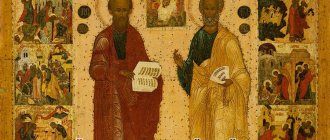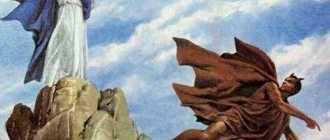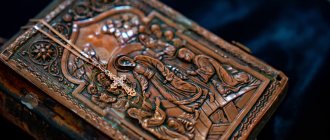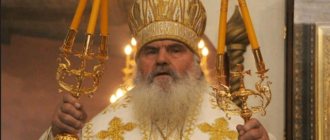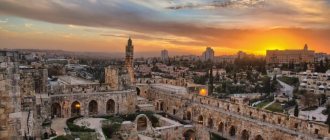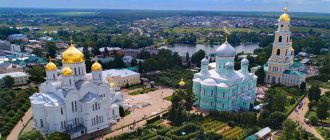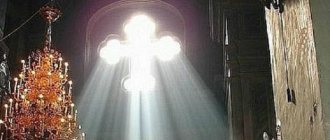| Oryol Diocese Russian Orthodox Church | |
Akhtyrsky Cathedral in Orel | |
| basic information | |
| A country | Russia |
| Metropolis | Orlovskaya |
| Diocesan center | Eagle |
| Founded | 17 May 1788 |
| Number of deaneries | 14 |
| Number of temples | 157 |
| Cathedral Church | Akhtyrsky Cathedral |
| Second Cathedral | St. Sergius Cathedral in Livni |
| Sanctification of the ruling bishop | Metropolitan |
| Title of the ruling bishop | Orlovsky and Bolkhovsky |
| Website | www.orel-eparhia.ru/ |
| Bishop | |
| Ruling bishop | Anthony (Cheremisov) |
| With | October 5, 2011 |
| Oryol diocese at Wikimedia Commons | |
Oryol diocese
- diocese of the Russian Orthodox Church on the territory of the urban districts of Orel and Mtsensk, as well as Bolkhovsky, Dmitrovsky, Znamensky, Kromsky, Mtsensky, Oryol, Soskovsky, Trosnyansky, Uritsky, Khotynetsky and Shablykinsky districts of the Oryol region. It is part of the Oryol Metropolis.
Orthodoxy on the Oryol land
In ancient times, the Oryol region was inhabited by representatives of the Finnish population, Vyatichi and Northerners. The Vyatichi lived along the Oka River, and the Northerners lived along the Desna and Sulei Semi rivers. The Northerners became part of Rus' under Prince Oleg in 884 and submitted to the Russian princes. The Vyatichi, as a more warlike people, were finally conquered by the Russian princes only at the beginning of the 12th century.
The first information about the spread of Christianity dates back to the end of the first half of the 12th century. The herald of the Christian faith in the Oryol region is considered to be the holy Equal-to-the-Apostles Hieromartyr John Kuksha, a monk of the Kiev-Pechersk Lavra. The Chernigov bishops and princes of Chernigov and Seversk are considered to be further spreaders of Christianity in the region. If the former successfully continued to engage in the apostolic activity of Saint Kuksha, then the efforts of the latter were aimed at the construction of churches.
Seraphim Brotherhood
Seraphim Chichagov appeared in the Oryol region in 1906, when he was appointed Bishop of Oryol and Sevsky. In his address to the clergy and flock, the bishop uttered the famous word: “Holding the cross in one hand, with the other I sound the alarm, beloved!” He called on the clergy to take crosses and go into the crowd, to “hurry” to squares, village gatherings, streets, crossroads, to factories and factories where people are worried, to conflagrations, defeats, massacres, and with a word of grace to admonish the embittered, seduced, preaching violence and turmoil, ready for all sorts of crimes. “Call everyone to churches for repentance and grace-filled sanctification with the Holy Mysteries and the revival of Christian communities in the parishes, which alone can guide the free Russian people to the true path!” he addressed the priests.
Possessing the gift of eloquence and a special ability to persuade, he argued the benefits of unification at pastoral meetings and at diocesan congresses of clergy, who previously dealt exclusively with the material needs of the diocese. By his own example, he showed how to work - go to the houses of parishioners, get to know each other, try to find out their needs, ease their grief with participation, advice, troubles and heal heart wounds.
In the Oryol Diocesan Gazette No. 31 of July 30, 1906, there is the following order from the Right Reverend Seraphim: “The Lord again did not bless many areas of the Oryol province with a harvest and, due to our sins, sent down new trials, destroying the crops with hail. The peasants face great need, especially in the Karachay and Mtsensk districts. Therefore, I instruct the priests to directly inform me about those parishes that are in need of food assistance, so that I can promptly provide them with a feasible donation.”
Under Bishop Seraphim, the Mariinsky Brotherhood was established at the Oryol See, designed to provide assistance to children, especially orphans, in obtaining an education. At the end of the first half of 1907, the Seraphim Brotherhood was established, the purpose of which was to help needy teachers and students of Oryol church schools.
Bishop Seraphim showed special concern for the church school. He himself developed a teaching system and personally attended exams in educational institutions of the province. On his initiative, new reading rooms are opened.
In October 1908, the saint left Orel: the Holy Synod transferred him to Bessarabia to the Kishinev See. They saw him off from Orel with tears...
He was shot in 1937 on charges of “counter-revolutionary monarchist agitation.” Chichagov had by that time been dismissed for health reasons.
In 1988 he was completely rehabilitated. In 1997, the Council of Bishops of the Russian Orthodox Church canonized him as a new martyr.
Oreltimes thanks the deputy director of the Central Russian Institute of Management - Oryol branch of RANEPA, professor Viktor Livtsov for his assistance in preparing the material.
Subscribe to OrelTimes on Google News, Yandex.News and our channel on Yandex.Zen, follow the main news of Orel and the Oryol region in the OrelTimes telegram channel. More interesting content on Instagram, VKontakte and Facebook.
ALSO READ: TOP 5 achievements of the Oryol region in 2020
Author: Ekaterina Kozlova
Comments for the site
Cackl e
Story
The Oryol diocese traces its origins to the Oryol-Sevsky diocese, formed by the decree of the Holy Synod of May 17 (28), 1788 on the basis of the Highest decree of May 6 (17), 1788 - to bring the division of dioceses into line with the division of the Russian Empire into provinces. At certain periods of its history it included the Bolkhov, Yelets, and Liven vicariates.
In the 1920s, some parishes in Orel, Dmitrovsk, Kromy, Livny, headed by Alexander (Monastyryov), submitted to the Renovation Synod.
In 1937, the ruling Bishop of Oryol, like almost the entire episcopate of the USSR, was shot; his fate was shared by the majority of the clergy of the diocese.
From 1937 to 1941, the remaining parishes in the diocese existed without administration.
From October 1941 to August 1943, during the period of German occupation, the diocese was part of the Central European Metropolitan District, headed by the Bishop of the ROCOR, Metropolitan Seraphim (Lyade) of Berlin. Dozens of parishes that were closed under Soviet rule have resumed their activities.
After the occupation of Orel by Soviet troops, the ruling Moscow Patriarchate sent Bishop Dimitry (Gradusov) of Ulyanovsk to Orel to inspect church affairs [1].
The diocesan bishop from July 21, 1988 until his death was Archbishop Paisiy (Samchuk) († March 20, 2008).
With the creation of a separate Bryansk diocese on February 25, 1994 - Oryol and Liven
.
On August 6, 2009, on the initiative of Archbishop of Oryol and Livensky Panteleimon, a decision was made to venerate the Hieromartyr Kuksha as the patron of the Oryol-Livensky diocese.
On July 25, 2014, the independent Liven diocese was separated from the Oryol diocese. At the same time, the Oryol diocese was included in the newly established Oryol Metropolis.
Father George's prayer gift
Georgy Kossov is a native Oryol resident, born in the village of Androsovo, Dmitrovsky district, Oryol province. But the place of his asceticism was the remote village of Spas-Chekryak, Bolkhov district.
When in 1884 Father Georgy was appointed rector of the parish in the village of Spas-Chekryak, Bolkhovsky district, it was the smallest, poorest, with a small church, a parish in which not only did he want to go to pray in the church, but he didn’t even want to live. And the previous priest fled from here to the district Bolkhov. Father George was thinking about the same thing. But, having received the blessing of the Optina elder Ambrose, he decided that it was possible and necessary to serve God everywhere. The appointed priest began daily services.
Father George’s “prayer gift” captivated the Spas-Chekryak people. And then nobles and commoners from all over began to come to the village to see the priest and receive a blessing.
For 10 years - from 1896 to 1905 - Kossov raised funds and built the three-altar Church of the Transfiguration of the Savior, and next to it - a shelter for peasant orphans (a three-story building for 150 people, who were taught not only literacy, but also weaving, shoe needlework, gardening, gardening).
In 1897, in Spas-Chekryak, through the efforts and funds of Father Georgy, a brick one-class parochial school was opened, in 1903 - a second-class school, which did not exist in the entire Bolkhov district. Through the efforts of the pastor, several more schools were opened throughout the parish.
For the boys of the Spas-Chekryak two-year school, Kossov set up a metalworking and carpentry workshop, bought land at the school and planted a garden and apiary on it. In addition, he maintained a small hospital and a brick factory at his own expense.
Georgy Kossov healed people. People who were possessed were brought to him. They suffered terribly, went into a frenzy, screamed, screamed. The priest prayed earnestly, sprinkled them with holy water, and the dark forces left the sick.
Soon after the revolution he was arrested. But his authority in the district was so great that the authorities released him from prison, fearing popular anger. Then another arrest followed, and again the authorities were forced to release the priest from prison. But Kossov was removed from the orphanage and from the schools where he taught. Arrests and other trials undermined the priest's health.
On August 26 (old style), 1928, Father George died, telling his faithful parishioners before his death: “That’s it. I leave you. Trust in God now. And come to my grave with your troubles, as if you were alive. As before, I will pray for you and help you.”
Just before the death of Father Georgy, a well collapsed in Spas-Chekryak, but a new spring appeared nearby, which is considered healing.
In August 2000, at the anniversary Council of Bishops in Moscow, Georgy Kossov was canonized to the rank of priest. His holy relics are currently located in the Transfiguration Church in Bolkhov. A particle of the saint’s relics is also in the Akhtyrsky Cathedral of the Eagle. Orthodox Christians come here for healing and prayer. And someone asks for good luck in business or prays for another, close or distant, for his luck, for a good journey, for peace and happiness.
Bishops
- Apollos (Baibakov) (June 5, 1788 - October 26, 1798)
- Dosifey (Ilyin) (October 26, 1798 - June 4, 1817)
- Jonah (Pavinsky) (July 22, 1817 - July 21, 1821)
- Gabriel (Rozanov) (September 18, 1821 - May 22, 1828)
- Nikodim (Bystritsky) (July 15, 1828 - December 30, 1839)
- Innokenty (Selnokrinov) (January 28 - April 25, 1840)
- Evlampy (Pyatnitsky) (June 27, 1840 - November 22, 1844)
- Smaragd (Kryzhanovsky) (November 12, 1844 - June 5, 1858)
- Polycarp (Radkevich) (July 12, 1858 - August 22, 1867)
- Makariy (Mirolyubov) (August 29, 1867 - December 25, 1876)
- Yuvenaly (Karyukov) (December 25, 1876 - December 31, 1882)
- Simeon (Linkov) (February 13, 1883 - June 3, 1889)
- Misail (Krylov) (June 3, 1889 - August 10, 1896)
- Mitrofan (Nevsky) (August 10, 1896 - January 2, 1899)
- Nikanor (Kamensky) (January 2, 1899 - March 28, 1902)
- Irenaeus (Horde) (March 28, 1902 - April 10, 1904)
- Kirion (Sadzaglishvili) (April 23, 1904 - February 3, 1906)
- Seraphim (Chichagov) (February 3, 1906 - September 16, 1908)
- Alexander (Golovin) (October 31, 1908 - December 31, 1910)
- Grigory (Vakhnin) (December 31, 1910 - January 28, 1917)
- Makariy (Gnevushev) (January 28 - May 26, 1917)
- Seraphim (Ostroumov) (May 27, 1917 - November 1, 1927; until August 18, 1917, bishop Belsky) Daniil (Troitsky)
(April 8 - October 28, 1922) supreme, bishop. Bolkhovsky
(December 1943 - February 1944) high school
(March 21 - June 2, 2008) v/u, Archbishop of Belgorod
Links
other countries Argentine • Baku • Berlin • Brussels • Budapest • Vienna • Vilna • The Hague • Korsun • Sourozh Autonomous churches Chinese PC Beijing • Xinjiang • Tianjin • Harbin • Shanghai Japanese PC Kyoto • Sendai • Tokyo Self-governing churches Ukrainian PC Alexandria • Baltska • Belotserkovskaya • Berdyansk • Boryspilska • Vinnitsa • Vladimir-Volynska • Voznesenskaya • Volynska • Gorlovska • Dzhankoyska • Dnepropetrovsk • Donetsk • Zhytomyr • Zaporozhye • Ivano-Frankivsk • Izyumska • Kamenets-Podilska • Kamenska • Kyiv • Kirovograd • Konotop • Kremenchug • Krivoy Rog • Luhansk • Lviv • Mogilev-Podolsk • Mukachevo • Nizhyn • Nikolaev • Novokakhovsk • Ovruch • Odessa • Poltava • Rivne • Rovenkovsk • Romensk • Sarnensk • Severodonetsk • Simferopol • Sumy • Ternopil • Tulchin • Uman • Feodosia • Kharkov • Kherson • Khmelnitsky • Khust • Cherkasy • Chernihiv • Chernivtsi • Shepetovsk
Human Rights Center of Moldova Beltsy • Edinet • Cahul • Kishinevskaya • Tiraspol • Ungheni
Latvian PC Daugavpilsskaya • Rizhskaya Estonian Human Rights Center Narvskaya • Tallinskaya ROCOR Berlin • British • East American • Geneva • Montreal • San Francisco • Sydney • Chicago • South American Exarchates Belarusian Exarchate Bobruisk • Borisov • Brest • Vitebsk • Gomel • Grodno • Lida • Minsk • Mogilev • Molodechno • Novogrudok • Pinsk • Polotsk • Slutsk • Turov
Metropolitan districts Kazakhstani Astanaiskaya • Karaganda • Kokshetau • Kostanay • Pavlodar • Petropavlovsk • Ural • Ust-Kamenogorsk • Chimkent
Central Asian Bishkek • Dushanbe • Tashkent • Patriarchal parishes in Turkmenistan
Patriarchal parishes of the Moscow Patriarchate Italy • Canada • USA • Finland
An excerpt characterizing the Oryol diocese
And old captain Kirsten shouted with enthusiasm and no less sincerely than twenty-year-old Rostov. When the officers drank and broke their glasses, Kirsten poured others and, in only a shirt and leggings, with a glass in his hand, approached the soldiers' fires and in a majestic pose, waving his hand upward, with his long gray mustache and white chest visible from behind his open shirt, stopped in the light of the fire. - Guys, for the health of the Emperor, for victory over the enemies, hurrah! - he shouted in his brave, senile, hussar baritone. The hussars crowded together and responded with a loud cry. Late at night, when everyone had left, Denisov patted his favorite Rostov on the shoulder with his short hand. “There’s no one to fall in love with on a hike, so he fell in love with Tsa’ya,” he said. “Denisov, don’t joke about this,” Rostov shouted, “this is such a high, such a wonderful feeling, such... - I feel, I feel, I share and approve...” “No, you don’t understand!” And Rostov got up and went to wander between the fires, dreaming about what happiness it would be to die without saving a life (he did not dare to dream about this), but simply to die in the eyes of the sovereign. He really was in love with the Tsar, and with the glory of Russian weapons, and with the hope of future triumph. And he was not the only one who experienced this feeling in those memorable days preceding the Battle of Austerlitz: nine-tenths of the people of the Russian army at that time were in love, although less enthusiastically, with their Tsar and with the glory of Russian weapons. The next day the sovereign stopped in Wischau. Life physician Villiers was called to him several times. News spread in the main apartment and among the nearby troops that the sovereign was unwell. He ate nothing and slept badly that night, as those close to him said. The reason for this ill health was the strong impression made on the sensitive soul of the sovereign by the sight of the wounded and killed. At dawn on the 17th, a French officer was escorted from the outposts to Wischau, who had arrived under a parliamentary flag, demanding a meeting with the Russian emperor. This officer was Savary. The Emperor had just fallen asleep, and therefore Savary had to wait. At noon he was admitted to the sovereign and an hour later he went with Prince Dolgorukov to the outposts of the French army. As was heard, the purpose of sending Savary was to offer a meeting between Emperor Alexander and Napoleon. A personal meeting, to the joy and pride of the entire army, was denied, and instead of the sovereign, Prince Dolgorukov, the winner at Wischau, was sent along with Savary to negotiate with Napoleon, if these negotiations, contrary to expectations, were aimed at a real desire for peace. In the evening Dolgorukov returned, went straight to the sovereign and spent a long time alone with him. On November 18 and 19, the troops made two more marches forward, and the enemy outposts retreated after short skirmishes. In the highest spheres of the army, from midday on the 19th, a strong, fussily excited movement began, which continued until the morning of the next day, November 20, on which the so memorable Battle of Austerlitz was fought. Until noon on the 19th, movement, lively conversations, running around, sending adjutants were limited to one main apartment of the emperors; in the afternoon of the same day, the movement was transmitted to Kutuzov’s main apartment and to the headquarters of the column commanders. In the evening, this movement spread through the adjutants to all ends and parts of the army, and on the night of the 19th to the 20th, the 80 thousandth mass of the allied army rose from their sleeping quarters, hummed with conversation and swayed and began to move in a huge nine-verst canvas. The concentrated movement that began in the morning in the main apartment of the emperors and gave impetus to all further movement was similar to the first movement of the middle wheel of a large tower clock. One wheel moved slowly, another turned, a third, and the wheels, blocks, and gears began to spin faster and faster, chimes began to play, figures jumped out, and the arrows began to move regularly, showing the result of the movement. As in the mechanism of a watch, so in the mechanism of military affairs, the once given movement is just as irresistible until the last result, and just as indifferently motionless, the moment before the transfer of movement, are the parts of the mechanism that have not yet been reached. The wheels whistle on the axles, clinging with teeth, the rotating blocks hiss from the speed, and the neighboring wheel is just as calm and motionless, as if it is ready to stand for hundreds of years with this motionlessness; but the moment came - he hooked the lever, and, submitting to the movement, the wheel crackled, turning and merged into one action, the result and purpose of which was incomprehensible to him. Just as in a clock the result of the complex movement of countless different wheels and blocks is only the slow and steady movement of the hand indicating the time, so the result of all the complex human movements of these 1000 Russians and French - all the passions, desires, remorse, humiliation, suffering, impulses of pride, fear , the delight of these people - there was only the loss of the Battle of Austerlitz, the so-called battle of the three emperors, that is, the slow movement of the world historical hand on the dial of human history. Prince Andrei was on duty that day and constantly with the commander-in-chief. At 6 o'clock in the evening, Kutuzov arrived at the main apartment of the emperors and, after staying with the sovereign for a short time, went to see Chief Marshal Count Tolstoy. Bolkonsky took advantage of this time to go to Dolgorukov to find out about the details of the case. Prince Andrei felt that Kutuzov was upset and dissatisfied with something, and that they were dissatisfied with him in the main apartment, and that all the persons in the imperial main apartment had the tone of people with him who knew something that others did not know; and that’s why he wanted to talk to Dolgorukov. “Well, hello, mon cher,” said Dolgorukov, who was sitting with Bilibin over tea. - Holiday for tomorrow. What's your old man? out of sorts? “I won’t say that he was out of sorts, but he seemed to want to be listened to.” - Yes, they listened to him at the military council and will listen to him when he speaks his mind; but it is impossible to hesitate and wait for something now, when Bonaparte fears more than anything else a general battle. -Have you seen him? - said Prince Andrei. - Well, what about Bonaparte? What impression did he make on you? “Yes, I saw it and was convinced that he was afraid of a general battle more than anything else in the world,” Dolgorukov repeated, apparently valuing this general conclusion he had drawn from his meeting with Napoleon. – If he were not afraid of battle, why would he demand this meeting, negotiate and, most importantly, retreat, while retreat is so contrary to his entire method of waging war? Believe me: he is afraid, afraid of a general battle, his time has come. This is what I'm telling you. - But tell me how he is, what? – Prince Andrey asked again. “He is a man in a gray frock coat, who really wanted me to say “Your Majesty” to him, but, to his chagrin, he did not receive any title from me. This is the kind of person he is, and nothing more,” answered Dolgorukov, looking back at Bilibin with a smile. “Despite my complete respect for old Kutuzov,” he continued, “we would all be good if we waited for something and thereby gave him a chance to leave or deceive us, whereas now he is surely in our hands.” No, we must not forget Suvorov and his rules: do not put yourself in the position of being attacked, but attack yourself. Believe me, in war, the energy of young people often shows the path more accurately than all the experience of the old cunctators. – But in what position do we attack him? “I was at the outposts today, and it is impossible to decide where exactly he is standing with the main forces,” said Prince Andrei. He wanted to express to Dolgorukov his plan of attack that he had drawn up. “Oh, it doesn’t matter at all,” Dolgorukov quickly spoke, standing up and revealing the card on the table. - All cases are foreseen: if he stands at Brunn... And Prince Dolgorukov quickly and clearly explained the plan for Weyrother’s flank movement. Prince Andrei began to object and prove his plan, which could be equally good with Weyrother’s plan, but had the drawback that Weyrother’s plan had already been approved. As soon as Prince Andrei began to prove the disadvantages of him and the benefits of his own, Prince Dolgorukov stopped listening to him and absentmindedly looked not at the map, but at the face of Prince Andrei. “However, Kutuzov will have a military council today: you can express all this there,” said Dolgorukov. “That’s what I’ll do,” said Prince Andrei, moving away from the map. - And what are you worried about, gentlemen? - said Bilibin, who had been listening to their conversation with a cheerful smile and now, apparently, was about to make a joke. – Whether there is victory or defeat tomorrow, the glory of Russian weapons is insured. Apart from your Kutuzov, there is not a single Russian commander of the columns. Chiefs: Herr general Wimpfen, le comte de Langeron, le prince de Lichtenstein, le prince de Hohenloe et enfin Prsch... prsch... et ainsi de suite, comme tous les noms polonais. [Wimpfen, Count Langeron, Prince of Liechtenstein, Hohenlohe and also Prishprshiprsh, like all Polish names.]
Saints Mitrofan and Elizabeth
Perhaps it would be fair to combine the story of two saints - Grand Duchess Elizabeth Feodorovna Romanova and Mitrofan of Srebryansky. Their destinies intertwined in Orel.
The Grand Duchess's husband, Moscow Governor-General Sergei Alexandrovich, was an Oryol landowner. When in 1891, famine due to crop failure engulfed many provinces of Russia, including four districts of the Oryol province, the Moscow governor-general donated 5 thousand poods (more than 80 tons) of rye from his Dmitrov estate to the benefit of the population of the affected districts. Elizaveta Fedorovna did not stand aside either; she sent 18 wagons of rye.
The Grand Duchess was the august chief of the 51st Chernigov Dragoon Regiment, which was stationed in Orel. And Mitrofan Srebryansky was appointed rector of the Intercession Church of the 51st Dragoon Chernigov Regiment in 1897. Under Srebryansky, a strong parish was formed, which allowed him to begin building the temple, which he completed with success. Father Mitrofan created a library and school at the parish. He donated all the funds received from benefactors to the temple, school and library.
In the summer of 1904, the Grand Duchess arrived in our city to escort a sponsored regiment to the Russian-Japanese War. Elizaveta Fedorovna gave the dragoons an icon of the Intercession of the Most Holy Theotokos and a field linen church.
Fr. went to war with his regiment. Mitrofan. Wherever the opportunity presented itself, he and his assistants set up a camp church and served. In the active army, the priest kept a detailed diary, which was later published in the journal “Bulletin of the Military Clergy”, and then published as a separate book.
In the summer of 1906, the Grand Duchess again came to Oryol to inspect the Chernigov regiment that had returned from the Far East.
All her life, Elizaveta Fedorovna walked toward a lofty goal - to found the Martha and Mary Convent of Labor and Mercy in Moscow. To do this, she sold all her jewelry and worked on the project of creating a monastery. Father Mitrofan also submitted his project. The Grand Duchess liked his vision of the future temple so much that she used it as the basis for the construction of the monastery. And she invited Srebryansky to take the place of confessor and rector.
The priest left Orel with a heavy heart - he had become so close to the local flock. On the day of his departure, such a crowd gathered at the station that only mounted police managed to clear the path for the train taking the priest to Moscow...
At the end of August 1913, the Oryol diocese widely celebrated the 800th anniversary of the death of the region’s educator, the Venerable Hieromartyr Kuksha. “An extraordinary revival among the masses,” reported the Oryol Diocesan Gazette, “and the arrival of the royal guest, Her Imperial Highness Grand Duchess Elizabeth Feodorovna, gave the holiday special grandeur and beauty.” She participated in solemn prayer services dedicated to the holy martyr in the main church of the monastery, the Peter and Paul Cathedral and on the vast cadet parade ground, where over ten thousand people gathered.
Once again the Grand Duchess visited Orel in the war year of 1916, visiting the Holy Vvedensky Convent, which she cared for...
On the night of July 18, 1918, Grand Duchess Elizaveta Fedorovna was executed by the Bolsheviks without trial: she was thrown alive into the Novaya Selimskaya mine, 18 km from Alapaevsk. The mine was blown up with grenades, filled with logs and covered with earth.
Elizaveta Fedorovna was canonized in 1981.
The relics of the Grand Duchess are in Jerusalem. Orthodox Christians ask the saint for help in difficult childbirths, the birth of a premature baby, and cancer.
In December 2004, the holy relics of the Venerable Martyr Elizabeth were in the Oryol region. As the Orlovites said then, “I just can’t believe that the Lord is now sending these joys to our suffering and much-sinned people.” So Grand Duchess Elizabeth once again “entered” the Oryol land.
Father Mitrofan lived a difficult life. He was arrested several times, and then completely sent into exile, first to Tobolsk, then to the northern regions. He spent the last years of his life in the Tver region in the village of Vladychna. He continued to serve secretly, despite the authorities' ban. Died in 1948. Canonized in 2000. His relics rest in the Resurrection Cathedral of Tver, where pilgrims flock today.
The amazing Oryol shrine connects our region with Mitrofan Srebryansky and Elizaveta Fedorovna. This is a cypress board from a portable throne, which was used by a priest on military campaigns. The board was donated by Elizaveta Fedorovna. It was preserved by believers, and then an icon was painted on it and solemnly donated to the Akhtyrsky Cathedral in Orel. Now it is located in the left aisle of the temple.
